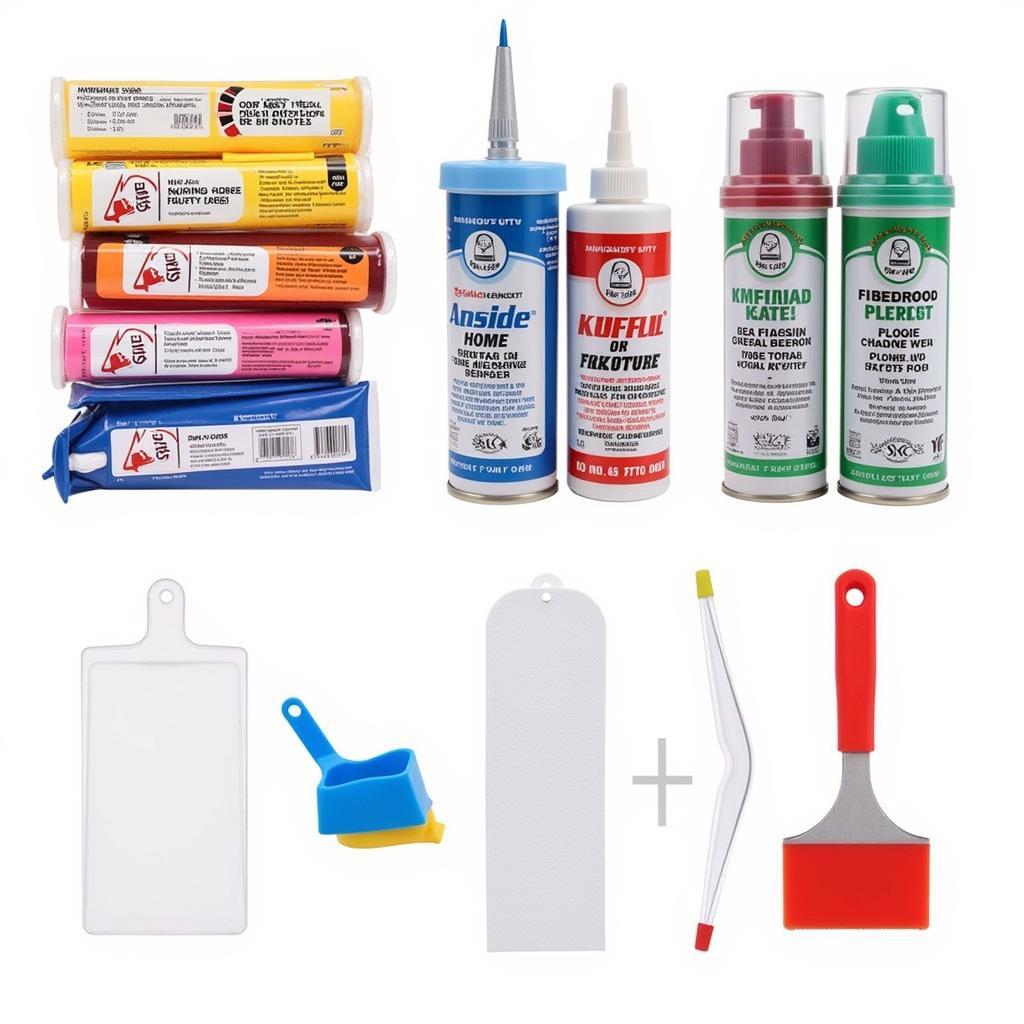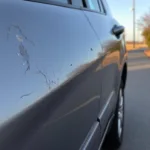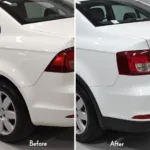Car body repair knifing putty is a crucial technique for achieving a flawless finish in auto body work. This article dives deep into the nuances of knifing putty, exploring its applications, benefits, and techniques for achieving professional-grade results. From understanding the right type of putty to mastering the perfect knifing technique, we’ll cover everything you need to know.
Understanding Car Body Repair Knifing Putty
Knifing putty, also known as glazing putty or finishing putty, is a fine-grained, easily spreadable filler used in the final stages of car body repair. Unlike thicker body fillers, knifing putty is designed to fill minor imperfections like pinholes, scratches, and small dents, creating a smooth surface ready for priming and painting. Choosing the right putty is paramount for a successful repair.
Choosing the Right Knifing Putty
Selecting the correct knifing putty depends on the specific repair and the type of substrate. Considerations include:
- Substrate Compatibility: Ensure the putty is compatible with the underlying material (metal, plastic, fiberglass).
- Drying Time: Choose a putty with an appropriate drying time for your workflow.
- Color: Select a putty color that closely matches the vehicle’s paint for easier blending.
The Art of Knifing Putty Application
Proper application is essential for achieving a smooth, professional finish. Here’s a step-by-step guide:
- Surface Preparation: Clean and degrease the repair area thoroughly. Lightly sand the area to ensure proper adhesion.
- Mixing the Putty: If using a two-part putty, mix the hardener and base according to the manufacturer’s instructions.
- Applying the Putty: Using a flexible putty knife or spreader, apply a thin, even layer of putty to the imperfection. Avoid applying too much putty at once, as this can lead to shrinkage and cracking.
- Knifing Technique: Hold the putty knife at a shallow angle to the surface and use a smooth, gliding motion to spread the putty. Overlap each stroke slightly to ensure complete coverage.
- Drying and Sanding: Allow the putty to dry completely according to the manufacturer’s instructions. Once dry, sand the area smooth using progressively finer grit sandpaper.
Common Mistakes to Avoid
- Applying too much putty: This can lead to cracking and shrinkage.
- Not properly mixing two-part putties: This can result in improper curing and adhesion issues.
- Sanding before the putty is fully cured: This can clog the sandpaper and create an uneven surface.
Why is Knifing Putty Important?
Knifing putty plays a vital role in achieving a professional-grade car body repair. It provides a smooth, blemish-free surface, ensuring a flawless paint job. A properly applied knifing putty can significantly enhance the overall aesthetics and value of a vehicle.
Benefits of Using Knifing Putty
- Fills minor imperfections: Creates a perfectly smooth surface.
- Easy to apply and sand: Simplifies the repair process.
- Cost-effective solution: A relatively inexpensive way to achieve professional results.
“Knifing putty is an essential tool for any auto body technician. It allows for precise filling of minor imperfections, creating a seamless foundation for the final paint job,” says John Smith, a veteran auto body repair specialist with over 20 years of experience.
Conclusion
Car body repair knifing putty is an essential technique for achieving professional-grade results. By understanding the different types of putty, mastering the application technique, and avoiding common mistakes, you can achieve a flawless finish on your car body repairs. Mastering car body repair knifing putty is an invaluable skill for any DIY enthusiast or professional auto body technician.
FAQs
- What is the difference between knifing putty and body filler?
- How long does knifing putty take to dry?
- Can knifing putty be used on plastic?
- What grit sandpaper should I use to sand knifing putty?
- How much knifing putty do I need for a small scratch?
- What happens if I apply too much knifing putty?
- Can I paint directly over knifing putty?
Need assistance with your car repair? Contact us via WhatsApp: +1(641)206-8880 or Email: [email protected]. Our 24/7 customer support team is ready to help.



